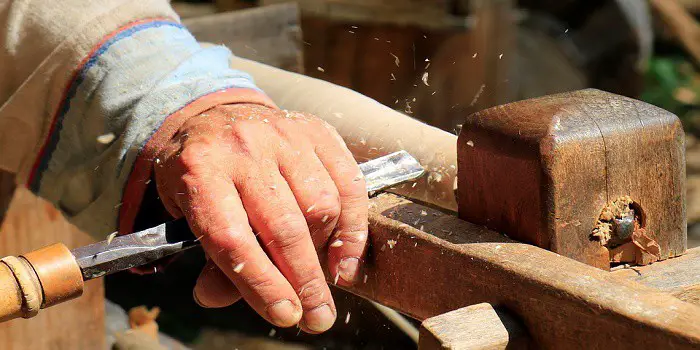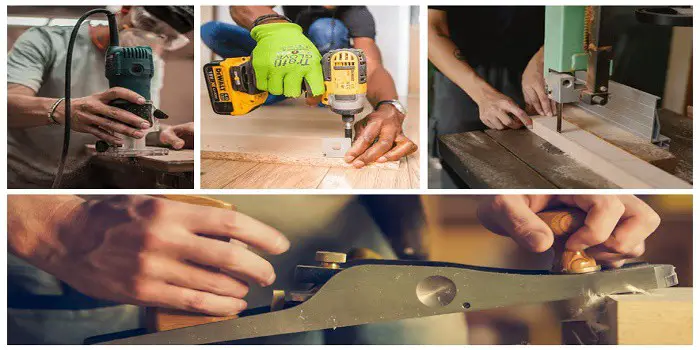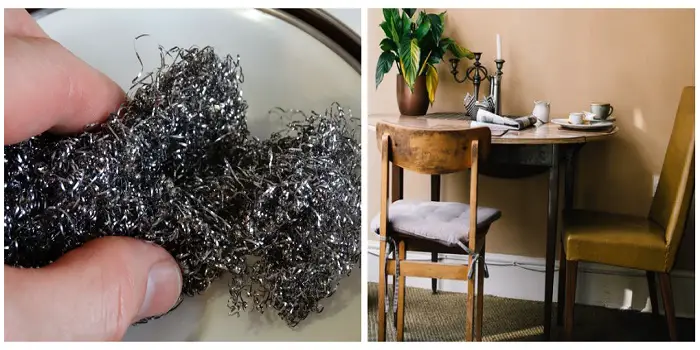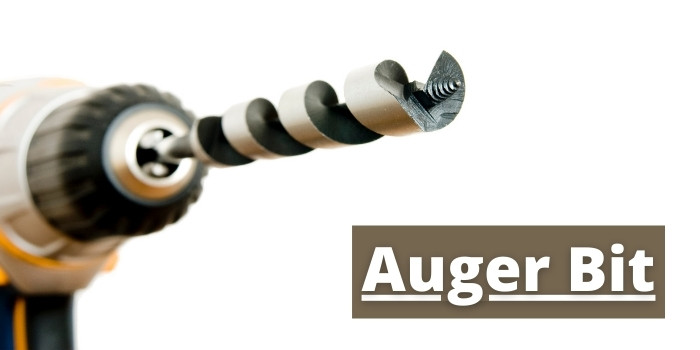
For many who look at an auger bit, it may seem like just another drill bit for making holes in the wood. However, there is a significant difference in both design and function that makes an auger a bit unique.
An auger bit is a spiral-shaped design drill bit that allows it to drill deep into the wood. The spiral nature of the drill allows easy ejecting of the wood particles that otherwise build up in the borehole. The spiral shape of the drill also means that the wood is removed as the auger bit descends into the wood.
Typical auger bits will have a sharp point to ensure that the right location is being drilled. Unlike the spiral design of the auger, the tip has a screw thread design that lets it set into the wood easier.
For the sake of some history, auger bits are old—really old. We’re talking 250 BC, when Archimedes invented a version to haul water uphill. Imagine using a drill to make a water slide. Genius.
Fast forward a few centuries, and someone slapped a handle on it, creating the T-auger—basically a medieval fidget spinner for carpenters. By 1809, Ezra L’Hommedieu gave us the spiral auger we know and love today—and yes, it’s still spiraling through the wood in the 21st century.
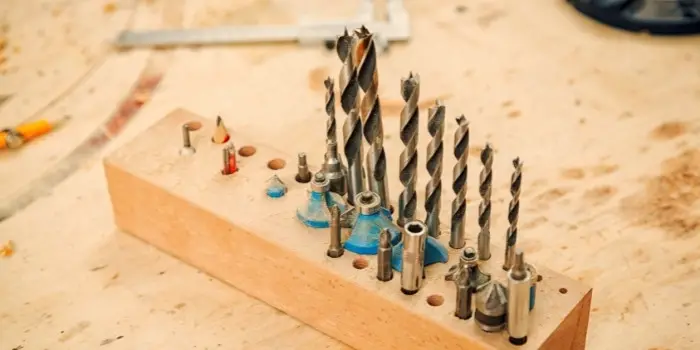
What are Augers Made of?
Until the turn of the 20th century, auger bits were generally made from hot-rolled cast steel. However, that type of material has been replaced by high-carbon tool steel. This form of steel is more rigid and more resilient.
The result is that under normal use conditions, the auger bit will last for a long time with relatively little in the way of maintenance.
Tool steel is slightly softer compared to high-speed steel, which is often used in standard drill bits.
Because most augers are designed to cut into the wood, the metal does not need to be quite as strong as high-speed steel. However, there are some types of auger bits that may use the harder form of steel, although it is not that common.
One variation is the tip of the auger bit, some of which may include titanium carbide. This material is so strong it can cut through nails.
Auger bits are also not known for being coated. Many types of drill bits are coated for additional protection and strength. But auger bits normally do not need such coating as the tool steel is more than strong enough to last for a long time under normal use conditions.
What are Auger Bits Used for?
The auger bit tends to be long and strong and is used to bore deep holes into materials such as wood, metal, and the like.
The reasons why augers are well suited for a wide variety of materials is because their nature is such that they can quickly drill and remove material that prevents clogging.
What makes the auger well suited for boring is that the design pulls the loose material up and out of the hole the auger is creating.
Because of the nature of the auger bit, it is just as valuable as being a hand tool as it is powered by a drill. The deep holes created by the auger make it best suited for running pipes and cables in between walls and flooring.
The auger can also be used to drill through thick material such as decking.
Other uses include creating mortises in hardwood doors that are usually thick. But even larger augers are used to drill holes in the earth.
Such auger bits tend to be quite large and long, pulling up enough earth so that posts can be implanted. Devices used to drill for post holes are called earth augers.
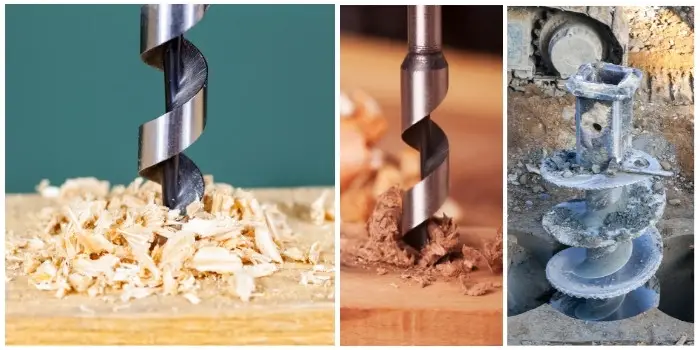
What are the Different Types of Augers?
Although the auger design is roughly the same across different variations, you do have several different types to choose. These types are specialized to drill into specific materials or create a unique effect.
Wood augers are the most common type of auger bit used to drill into wood and create holes to pass pipes or cables. A few other varieties also include:
1- Carbide-Tipped:
Quite similar to the standard wood auger bits. The difference is the carbide tip on the end. This allows the auger to cut through nails and other hard, hidden objects in the wood.
With standard wood auger bits, a hidden nail might tear it up. With a carbide-tipped auger bit, it can cut through the nails easily.
Primarily used for demolition work or when re-using wood from other projects.
2- Concrete:
This type of auger bit is used with hammer drills. The concrete auger bit is essentially the same as a wood auger, except it’s designed to cut into concrete and masonry.
The result is a neat borehole through which pipes or wiring can be passed. Concrete auger bits are also quite sturdy and designed to last a long time.
3- Earth:
This type of auger bit is used to bore holes into the soil. This is usually done to create holes in fence posts.
You will often see them used in gardens. It does need a good motor, such as a cordless drill or chainsaw motor, to get it to work correctly.
There are variations of earth augers designed to drill through concrete or tarmac. These are very similar to standard earth augers. But they have a special tip designed to rip through rocks, stones, and other hard materials.
This is commonly used to break up asphalt, concrete, and other hard materials that are part of the soil.
4- Ice:
Thanks to many television shows and movies depicting ice fishing, this may be the most recognizable of all types of auger bits.
Ice augers tend to be quite large and are typically used with a cordless drill to punch holes in the ice for fishing purposes.
5- Triple Fluted:
This is a distinctive type of auger bit that can be identified by its flared end. The triple-fluted bit is quite aggressive. This means that it can cut through wood rapidly when neatness is not a requirement.
Mostly used for demolition, the triple-fluted auger bit is considerably faster compared to most of its counterparts.
Auger Drill Bit Size Chart & What They’re Good For
| Size | Type | Typical Use | Fun Take |
|---|---|---|---|
| 1/4″ – 1″ | Common Auger Bits | Wood drilling – furniture making, carpentry, etc. | The “regular Joe” of auger bits – short, sharp, and to the point. |
| 2″ – 3″ diameter | Small Ground Augers | Bulb planting, mini posts. | The gardening ninja—plants bulbs like a pro. |
| 6″ diameter | Medium Ground Auger | Small plants, steel fence posts. | The handyman’s BFF for weekend fencing projects. |
| 8″ – 10″ diameter | Large Ground Auger | 4×4 wooden posts, big plants, adding concrete around posts. | When you need precision and wiggle room. |
| 12″+ diameter | Extra Large Ground Auger | Deck footings, foundation holes. | The heavy lifter. Builds decks, impresses neighbors. |
| Up to 50 ft length | Industrial Augers (electric/gas) | Tunnel boring, commercial excavation. | Basically the Godzilla of augers—can dig to the other side of the planet. |
Auger Bit vs. Other Drill Bits – What to Choose?
Now that you know what an auger bit does and the different types, the question becomes whether you should choose it over other types of drill bits.
The answer depends on what task you want to accomplish when drilling. Because standard drills are not like augers, and augers cannot do certain things compared to other drill types.
Auger bits are primarily designed to bore holes into materials such as wood. How auger bits compare to other types of drill bits consists of the following.
- Brad Point: Brad-point bits are faster but narrower and do not drill deep holes
- Forstner: Messier than auger bits but can cut flat-bottom holes better
- Hole: Better at making shallower, wider holes compared to auger bits
- Speed: Speed bits are faster but messier compared to auger bits
To help you better understand the best choice, it pays to know the advantages that using an auger bit brings to your project.
a) Depth: You can drill neat holes into the wood at depths up to 31” or more, depending on the length of the bit. This allows you to create all sorts of projects, from furniture to decks and more.
b) Ease: Because of the design of the auger bit, it does not require much pressure to drive it into the material.
This means that the auger bit itself does most of the work. This translates to creating neat holes in wood and other materials while requiring very little in the way of strength. Even hand drills using augers are relatively simple to use.
c) Quality: Because of the sharp spurs along the edges of the bit, the overall quality of the holes being made is quite good. This means a smooth, uniform appearance to the hole that has been created.
d) Removal: Because of the way the auger is designed, the loose material created when boring is quickly removed. The easy ejection of such material means that the auger can be used repeatedly without having to stop and clean away the shavings.
Of course, there are a few disadvantages to using an auger bit. Most notably, its lack of versatility. Remember it when you need to choose the right drill bit for your project.

Hi, I am Mark Garner a professional carpenter, woodworker, and DIY painter. I live in the small city of Peoria, Arizona as a semi-retired woodworker. I have started this blog with a simple motive to help you with my wood experience in this sector. If you like to know more about what I love doing and how it all got started, you can check more about me here.


